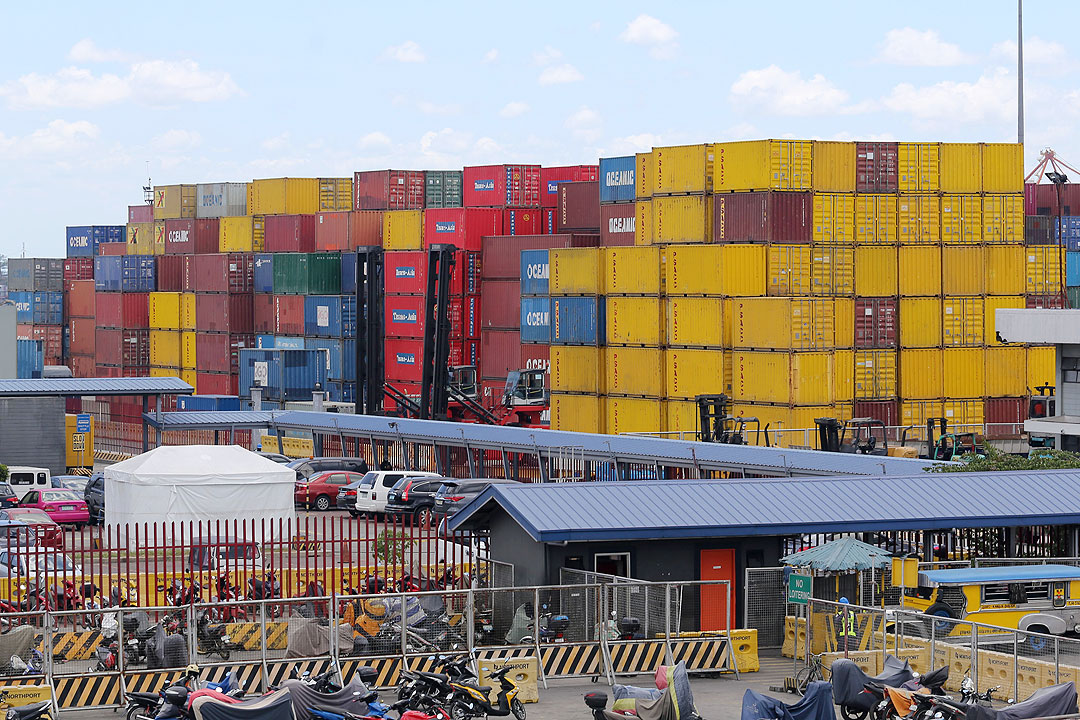




Inflation Update: Green light for easing
 DOWNLOAD
DOWNLOAD

December Economic Update: One for them, one for us
 DOWNLOAD
DOWNLOAD

Philippines Trade Update: Trade trajectories trend along
 DOWNLOAD
DOWNLOAD


PH trade outlook dims as global economy slows

A global economic slowdown, elevated inflation and high interest rates may continue to dampen Philippine trade in the coming months, Moody’s Analytics said.
“Although exports held up well in August, a slowing global economy will keep a lid on demand from key markets,” Moody’s Analytics said in a report dated Oct. 13.
The Philippines’ trade deficit narrowed to USD 4.13 billion in August, its lowest level in two months as an increase in exports offset the drop in imports, data from the Philippine Statistics Authority (PSA) showed.
Exports jumped by 4.2% year on year to USD 6.7 billion in August, the fastest since November 2022. Imports contracted by 13.1% year on year to USD 10.83 billion in August.
For the first eight months of the year, the trade gap narrowed to USD 36.31 billion from the USD 41.86-billion deficit during the same period a year ago. Exports declined by 6.6% to USD 47.81 billion as of end-August, while imports fell by 9.6% to USD 84.12 billion.
Moody’s Analytics said that latest exports data from the Philippines showed that the global tech cycle has “bottomed.”
“The Philippines is a regional hub for the testing and final assembly of semiconductors, but its exports of electronic products have been vulnerable to the semiconductor downcycle over much of the last year,” it said.
Electronic products, which made up more than half of the total exports in August, rose by 6.1% to USD 3.88 billion.
“Strikingly, semiconductor exports jumped 14%, marking a fourth straight double-digit improvement,” it added.
The Semiconductor and Electronics Industries in the Philippines Foundation, Inc. earlier said it expects electronic export growth to be flat after a poor performance in the first half.
Moody’s Analytics said that the slowdown in China will also impact the Philippines’ trade outlook.
“The spluttering economic recovery in China again disappointed Filipinos, with exports to that market a smidgen lower than a year ago,” it said.
“Still, China remained the fourth-largest destination for exports for a second straight month (in August), ranking behind the US, Japan and Hong Kong. China ranked first in March, April and May and second in June,” it added.
The United States remained as the main destination of local goods in August, with export value reaching USD 1.1 billion or a 16.4% share of the total export receipts. Export value to China stood at USD 838 million in August.
Meanwhile, import growth will likely be constrained as household spending remains muted.
“Imports will be kept in check as high borrowing costs and elevated inflation to the end of the year prompt households and businesses to be cautious about spending,” Moody’s Analytics said.
Inflation averaged 6.6% in the first nine months of the year, still above the Bangko Sentral ng Pilipinas’ (BSP) revised 5.8% full-year forecast.
Persistent inflation has prompted the BSP to keep its key interest rate at a near 16-year high of 6.25% for the last four meetings. The BSP governor has also signaled the possibility of a 25-basis-point hike at its Nov. 16 meeting.
For this year, the government is projecting 1% growth for exports and 2% growth for imports. — Luisa Maria Jacinta C. Jocson
This article originally appeared on bworldonline.com





 By BusinessWorld
By BusinessWorld